Effective/strategic HRM management
- Linking Human resource policies to the strategic objectives of the firm leading to greater output and performance.
- Emphasizes on HRM as:
- Significant for management effectiveness;
- Personnel competence;
- Cost-effective;
- General organizational aptitude.
- Employment of HRM tools in administration is vital in:
- Managing.
- Inspiring.
- Developing a team of workforce.
- Performing.
To ensure efficiency and greater performance, the HRM must recognize the importance of personnel planning, training and development, remunerations as well as staffing (Boxall and John 52). Further, compliance with the legal requirements, labor relations and embracing globalization are significant in enhancing the overall performance of the firm.
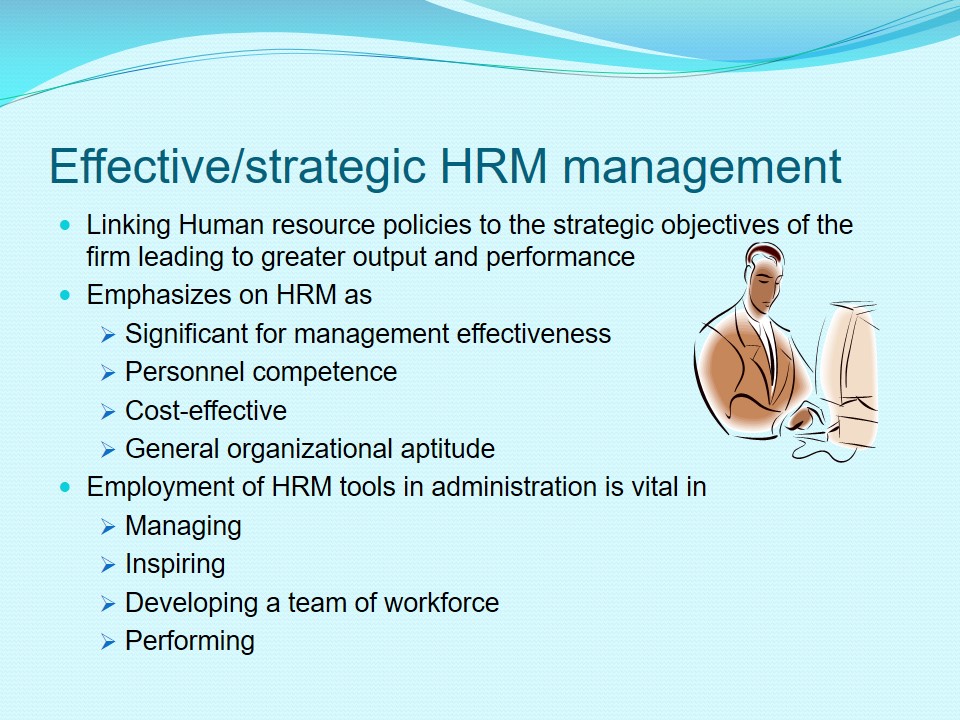
Personnel training and recognition
- Training and recognition of staff enhances the workforce capabilities.
- Training of employees plays an important role in the achievement of the overall goals of the organization.
- The training of the employees involves:
- Developing their leadership skills;
- Mentoring;
- Review of the organization resources.
- Through training:
- The flexibility and efficacy of the personnel are enhanced;
- Employees are capable of using new technologies with ease;
- Consistency of work procedures is a major outcome of employee training that leads to increased effectiveness.
An office culture that recognizes the employees gains foster staff morale thereby leading to increased productivity. In addition, ensuring effective communication and responding to the needs of staff boost their morale (Boxall and John 54).
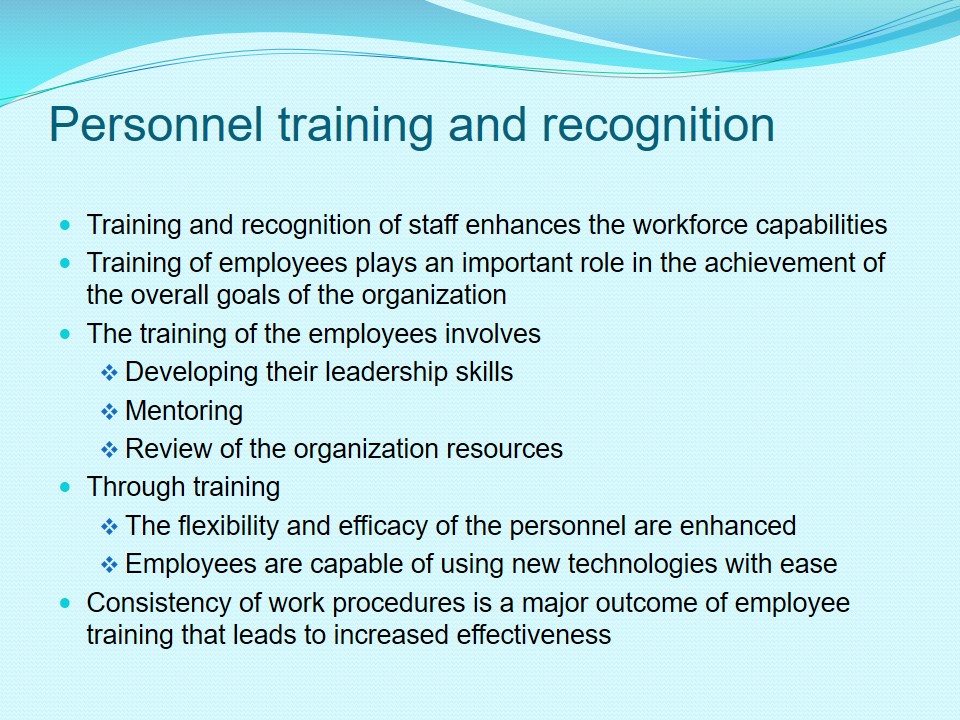
Planning and development
- Planning enables:
- The organizations place its employees on the right dockets.
- The management in knowing the number of employees required to carry out a specific task.
- Managers to set clear and attainable objectives of the firm.
- The management to identify its personnel based on their qualifications thereby ensuring efficiency in the implementation of the firms’ objectives.
- The identification of key positions within an organization and proficiencies for such posts.
- The organization to instill a learning that goes beyond the unforeseeable future to its employees focusing on long-term objectives of the firm.
- The organization to help its employees set their career goals and ways of achieving them.
- Development:
- Development involves redesigning the organizations’
- Arrangements.
- Systems.
- The processes that are significant for efficiency.
- HRM ensures a goal-oriented process that is aimed at maximizing the output of the personnel, working groups and the firm in general.
- Through development:
- Management is capable of reviewing and assessing the performance and output of the workers.
- Managers are capable of delegating tasks to staff in order to achieve positive outcomes.
- Development involves redesigning the organizations’
Planning is a significant aspect within HRM since it allows the organization focus on long-term goals and objectives. In addition, it allows the organization to orientate its employees according to the set objectives (Boxall and John 55).
The development of employees careers makes them readily accessible when their services are required based on their knowledge and proficiency. Planning lays a foundation and identification of structures in a firm that need diagnosis and changes. On the other hand, development plays a great role in enhancing the decisions made by the management (Boxall and John 55).
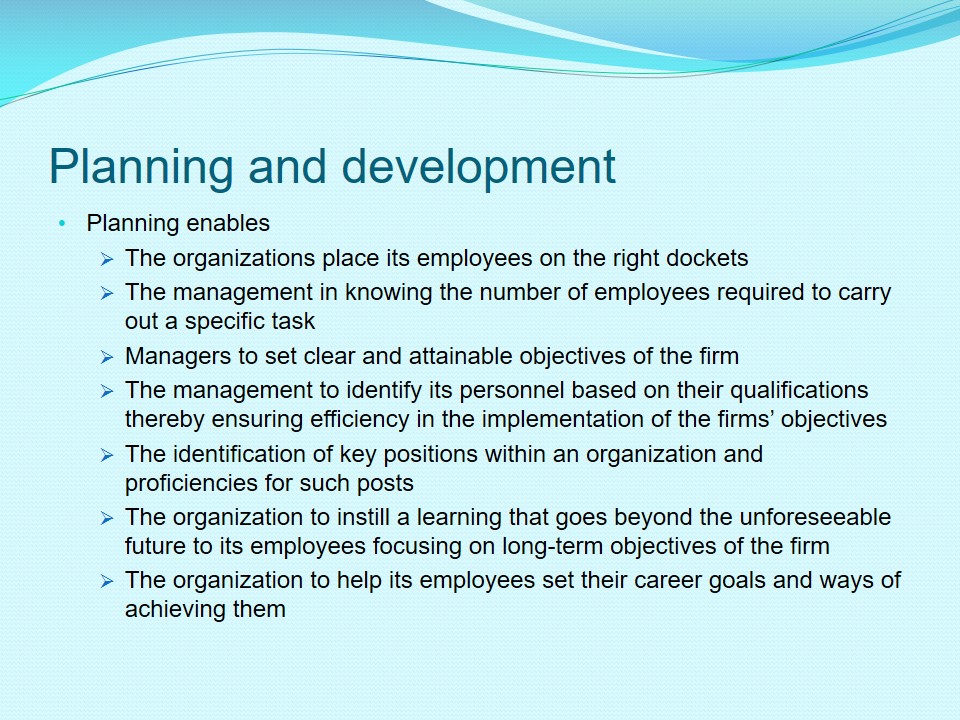
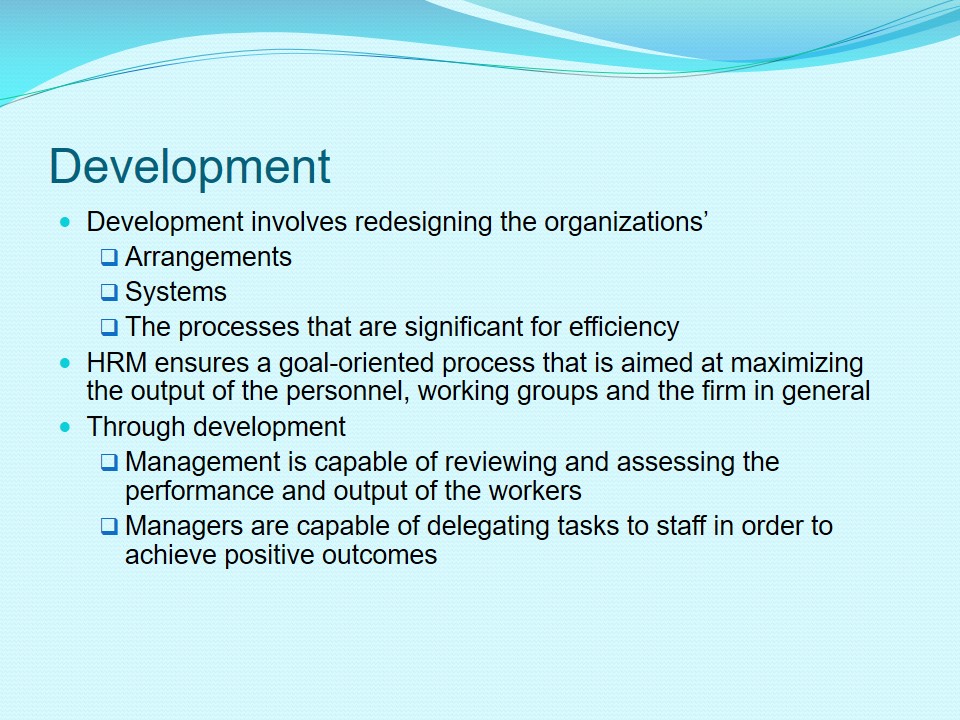
Staffing and remuneration
- Staffing involves:
- Job breakdown;
- Recruitment;
- Selection.
- Hiring the right people for the right job demonstrate high levels of initiative and creativity to the organization.
- Adhering to the stipulated frameworks on selection is significant for qualified employees.
- Rewarding employees based on their qualifications and job description enhances their performance.
- Payment of workers based on the assessment of their performance.
- The organization should ensure fair remuneration system.
- Regular evaluation and modification of pay system enhances efficiency.
The organization must ensure that it has the required number of staff with the requisite expertise in the obligatory tasks to achieve maximum output (Boxall and John 65). The organization should also have a systematic procedure of identifying its workers expertise, responsibilities and knowledge based on the job done.
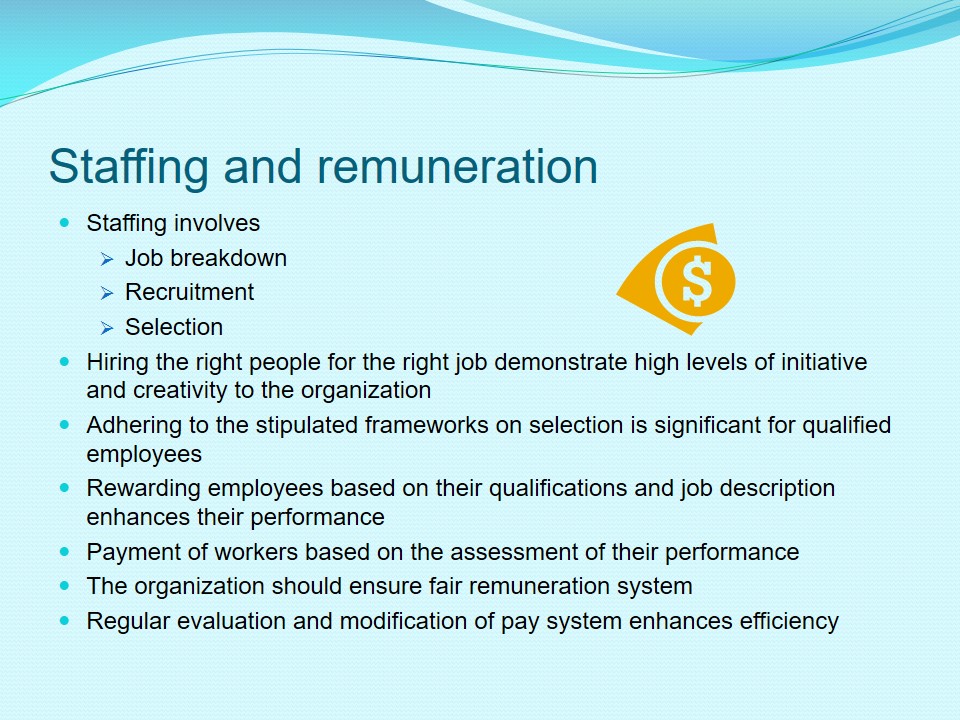
Employee safety and labor unions
- Employee safety involves:
- Working in safe environment;
- Good health;
- Free from ailments;
- Maintenance of physical and mental wellbeing;
- Protection from industrial accidents.
- Employees’ safety are always bargained through:
- Labor unions.
- Good working relations between the firm and the workers union enhances:
- Workers performance;
- Harmony between personnel and management;
- Productivity.
Safe work environment as well as good health of workers leads to increased productivity to the firm. The organization should ensure that the personnel are free from ailments as well as maintenance of their physical and mental wellbeing to enhance their productivity. In addition, the organization must ensure that workers are protected from harms arising from work-related industrial accidents (Boxall and John 70). The firm must recognize the membership dynamics of its employees’ unions through industrial relations. Embracing collective bargaining in good faith with the employees’ unions in solving workers’ grievances enhances good working relationships and harmony between the personnel and the management. Labor unions play a critical role in effective bargaining of the complaints raised by employees with the management.
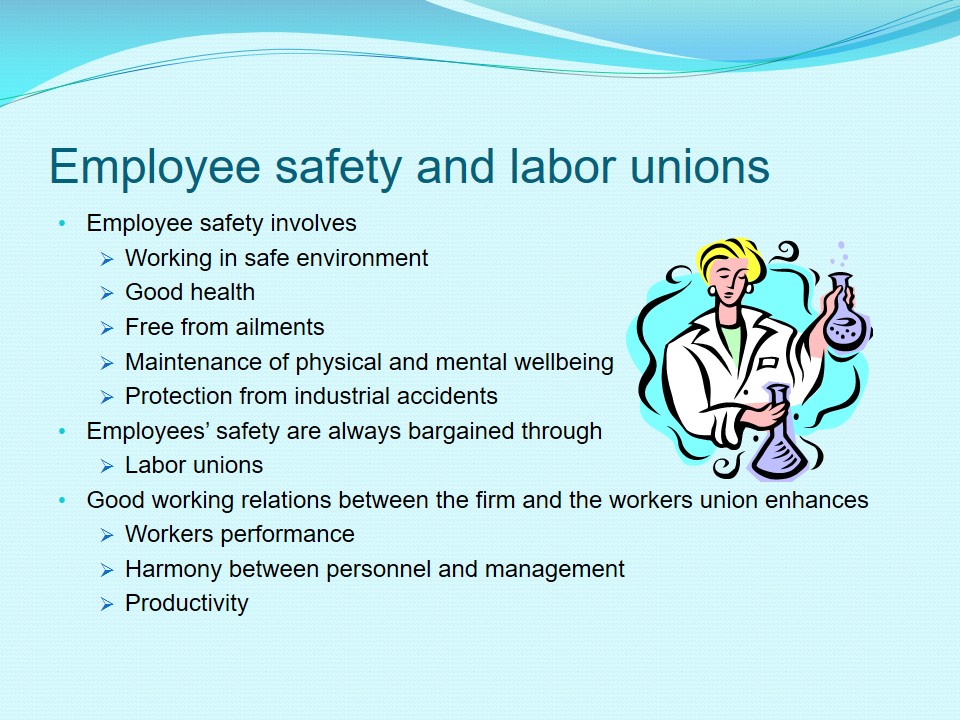
Legal considerations
- The HR policies should be compliant with the legal requirements.
- The HR should meet its legal obligations through approval of procedures related to:
- Contents of job contracts;
- Recruitment;
- Personnel management;
- Conditions for employment;
- Submission of regular personnel reports to the management concerning changes in industrial legislations.
- The HR should not allow employment based on:
- Gender;
- Marital status;
- Political opinion.
The organization must meet its legal obligations through provision of policies and procedures that inform decision-making. Amicable solution of staff disputes and disciplinary concerns that may have industrial implications ensure efficiency in the operations of the firm (Boxall and John 72). The business has an obligation to recognize the provisions for long service leave for employees. The business should adopt anti-discrimination legislations that disallow favoritism in employment based on gender, marital status, and political opinion among others.
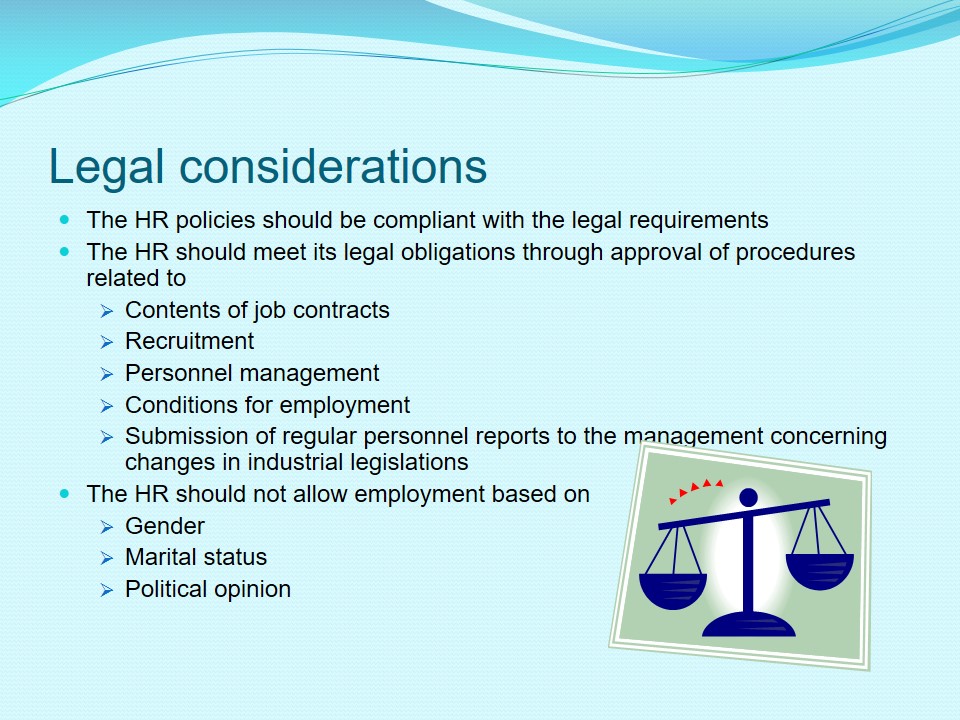
Globalization
- For current global organizations to remain competitive in the international market, they must:
- Keep constant supply of competent workforce;
- Look for competent workforce beyond national periphery;
- Look for adaptable workforce in the international environment;
- The organization need global framework for management and leadership development.
- The framework should focus on:
- International skills;
- Innovation;
- Flexibility;
- Adaptability;
- Cultural values.
Sustaining and gaining competitive benefits call for adjustment to the alterations due to globalization, trade liberalization and cyber revolution by the business. With globalization, the organization faces immense competition in their products and labor markets. The organization must maintain a supply of competent workforce. The basic principle for strategic human resource management is to gain competitive advantage through strategic valuing of human assets (Boxall and John 77). The management should steer away from the hierarchical paradigms of management to create flexible approaches that are capable of coping with the changes.
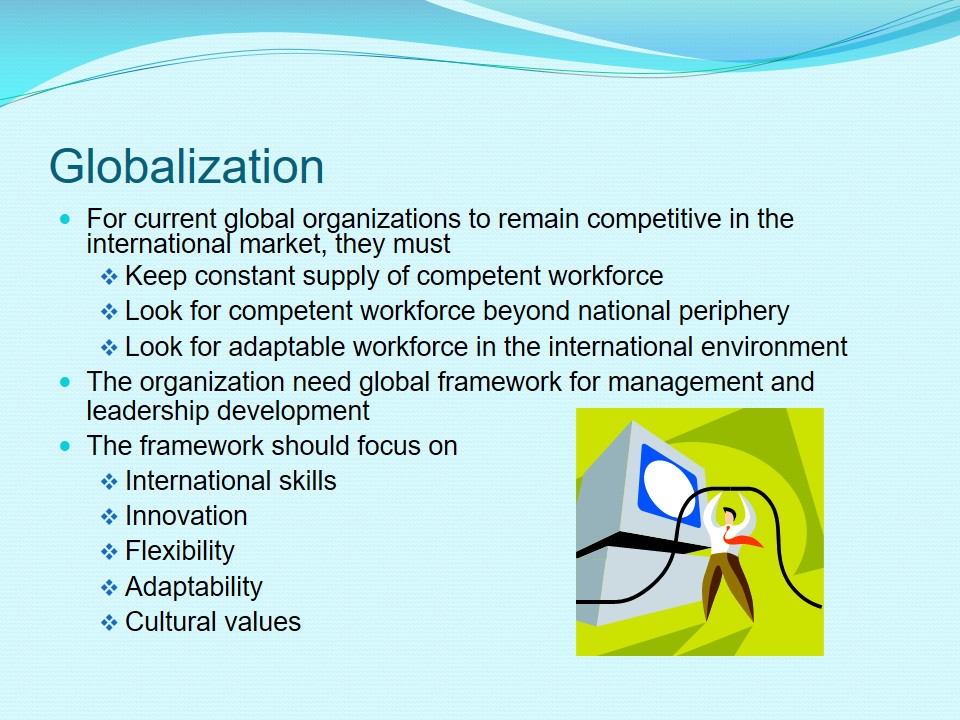
Attaining Globalization output
To attain the global output, HRM should:
- Find and recruit the right workers from around the globe that have the capabilities of meeting the international challenges.
- Maintain an effective data that is used globally to ensure simplicity and efficiency in its operations.
- Ensure that the correct blend of personnel in terms of culture and skills to enable easy operations in the global markets.
- Develop a way of managing anxiety from labor rights in other countries from diverse cultures.
- Address language barrier concerns by appointing bilingual employees.
- Acknowledge the diversities in terms of culture and customs in employing personnel.
Business process outsourcing enables the organization enhance its services by deploying personnel from diverse backgrounds in the globe. Outsourcing is also significant in bringing more prospects as well as income to the organization (Boxall and John 111). Emphasizing on enterprise level bargaining as opposed to collective bargaining is also significant for HRM in keeping up with globalization.
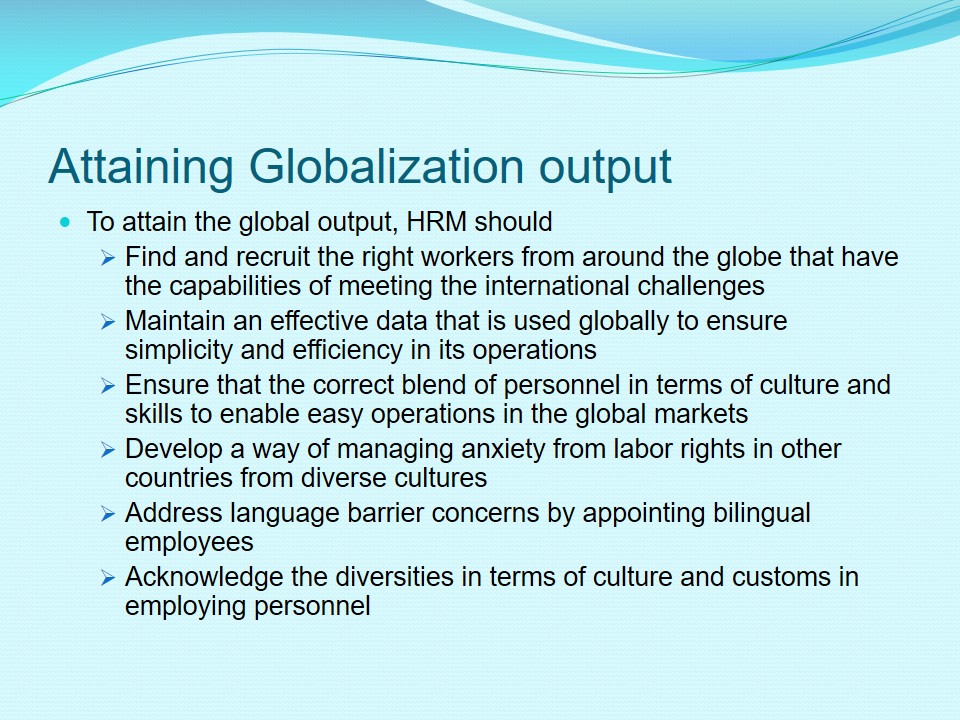
Internationalizing Employees
To increase adaptability within the international environment the HR should:
- Train the staff on diverse international dialects to enhance communication.
- Train its executives on diverse cultural aspects to prevent character clashes, racial and cultural opposition.
- Train employees and executives on international practices, and values to enables them accept leadership approaches from other cultures.
- Train employees on the current technologies to enhance their performance on global landscape.
- Enable employees be innovative and adopt global approach in carrying out their duties.
The HRM should undertake a reduction in its labor force and lay greater emphasis on output and quality in a bid to keep up with globalization and competition. Moving production globally lowers expenses and stimulates sensitivity to both national and global needs of the customers (Boxall and John 111).
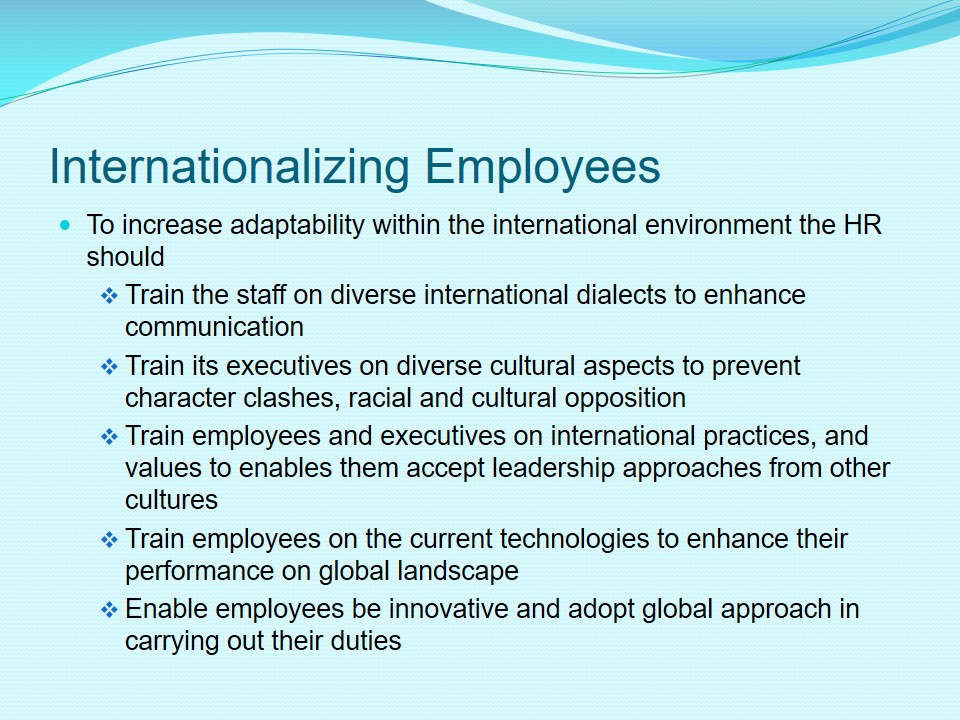
Works cited
Boxall, Peter and John Purcell. Strategy and Human Resource Management. Basingstoke: Palgrave McMillan, 2003. Print.